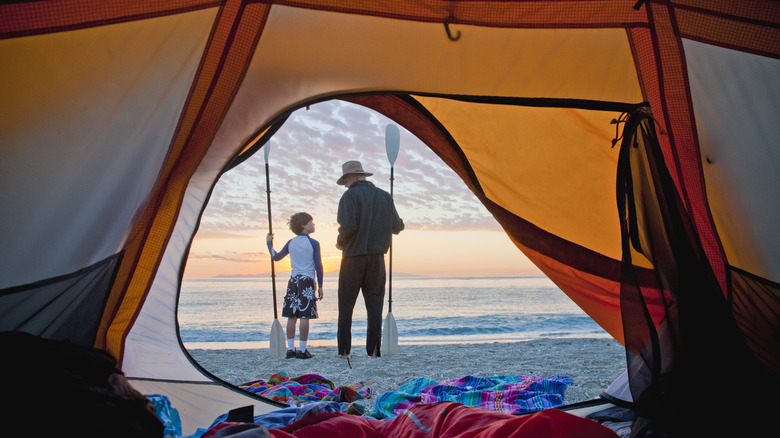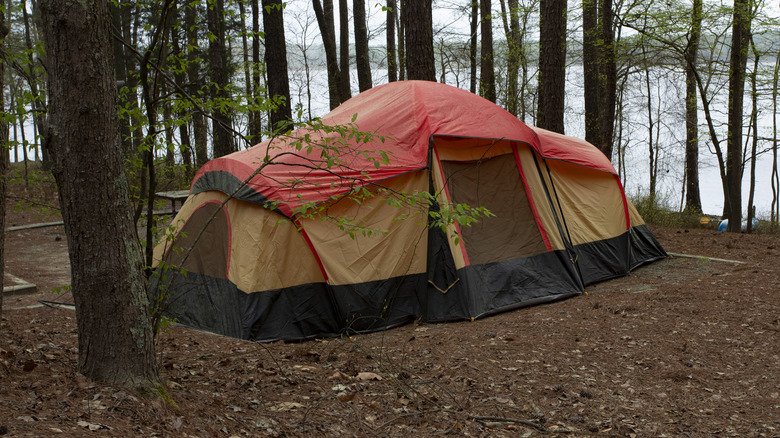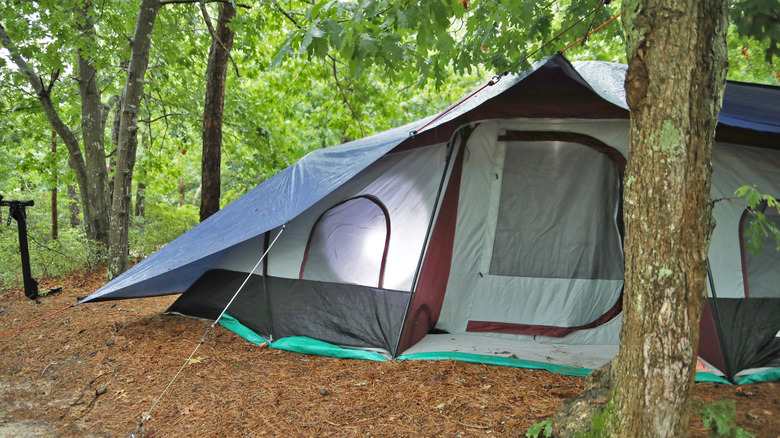The Best Type Of Tent For Families Offers Comfort, Space, And Convenience While Camping
Can we just talk about how amazing tents are? Here's a dwelling made of fabric, which has protected travelers from the elements for thousands of years. By definition, a tent can be set up, slept in, and taken down again, then transported to a completely different place before nightfall. The concept of the "tent" comes in many forms around the world: the North American teepee, the Central Asian yurt, the Bedouin "bayt al-shar," and the classic A-frame tent, to name a few. Medieval knights slept in conical tents before tournaments and battles, and modern alpinists sleep in bivy sacks only a little larger than themselves. Once you've chosen the right tent for your next camping adventure, you'll feel like you can go anywhere.
But the second young children are involved, tents suddenly feel a lot less miraculous. When kids are rolling around, struggling to sleep, or fighting over inflatable pads, a tent devolves from a cozy wilderness shelter to a suffocating nylon prison. Privacy and personal space cease to exist; even the largest tent is just a big, shared space, with sleeping bags chaotically lined up on the ground. You might as well just sprawl your family out on the floor of your living room and snore in each other's faces.
There's a solution to this problem, though, which is the multi-room tent. These structures are the same as regular tents, just a little more spacious and divided into two or more compartments. This way, campers can separate from each other, sleeping in individual "bedrooms." Families can divide up by age or shared interest, but because the walls are still paper-thin, everyone feels close and included in this outdoor experience.
The best times for a multi room tent (and the worst)
Multi-room tents vary widely in quality, design, and price, but the cheapest ones start at around $135 and go up from there. Any tent should withstand light rain and moderate chill, and ventilating zip-up windows have become standard for any tent you buy. As you browse more sophisticated versions, you'll find sturdier poles, better weather protection, and space for as many as 12 people. You'll find modular tents that connect to each other like a kind of futuristic colony or pop-up tents that can theoretically be raised and ready in only two minutes. You have all kinds of options, depending on your budget and group size.
The concept of the multi-room tent caters to families with multiple children, although they could also function well for scout troops, concert caravans, or any other group of people with a good relationship. The ideal users are traveling together; they don't mind sleeping under the same roof, but they may require some separated "me time." It's also just nice to have a designated place to change clothes or keep personal effects.
So why doesn't everybody travel with a multi-room tent? For starters, they're big and heavy compared with regular tents. It's pretty normal for the bagged kit, including walls and poles, to weigh around 40 lbs. That load is far more cumbersome than any single backpacker would want to carry, which basically rules out trail-camping. Multi-room tents are designed for road-trips to established campgrounds with sizable plots and level ground. Car-camping allows you to carry more on your getaway and maintain a longer checklist. It's also better for smaller kids who aren't quite ready to lug backpacks into the mountains.
Challenges and care of multi-room tents
The bigger your tent, the more you have to maintain. This includes carrying a large kit, figuring out how to put it together, and taking it down at the end of your stay. If it has multiple doors, each opening increases the chance of bugs sneaking in. Most tents are time-consuming to set up, so they're only worthwhile if you stay more than one night — a luxury not every family has. After a day or two, tents have a tendency to get messy with misplaced items, tangled bedding, and tracked-in dirt. Meanwhile, the thin walls won't prevent sound or flashlights from coming through, so rival siblings can still actively pester each other all through the night. Tent camping is a lot less intimidating with a few simple steps, but the more tent you bring, the more you'll have to worry about.
This is why, when kids reach a certain age, you may end up putting them in their own tent. If you can trust them not to play with matches or wander off at midnight, the distance of a few feet between shelters probably won't be much different than a fabric divider inside the same shelter. Larger tents can be complicated to put together, so you might actually save time by just putting up two simpler ones. One of the joys of camping is embracing simplicity; it's up to you whether that comes in the form of one tent or two.


